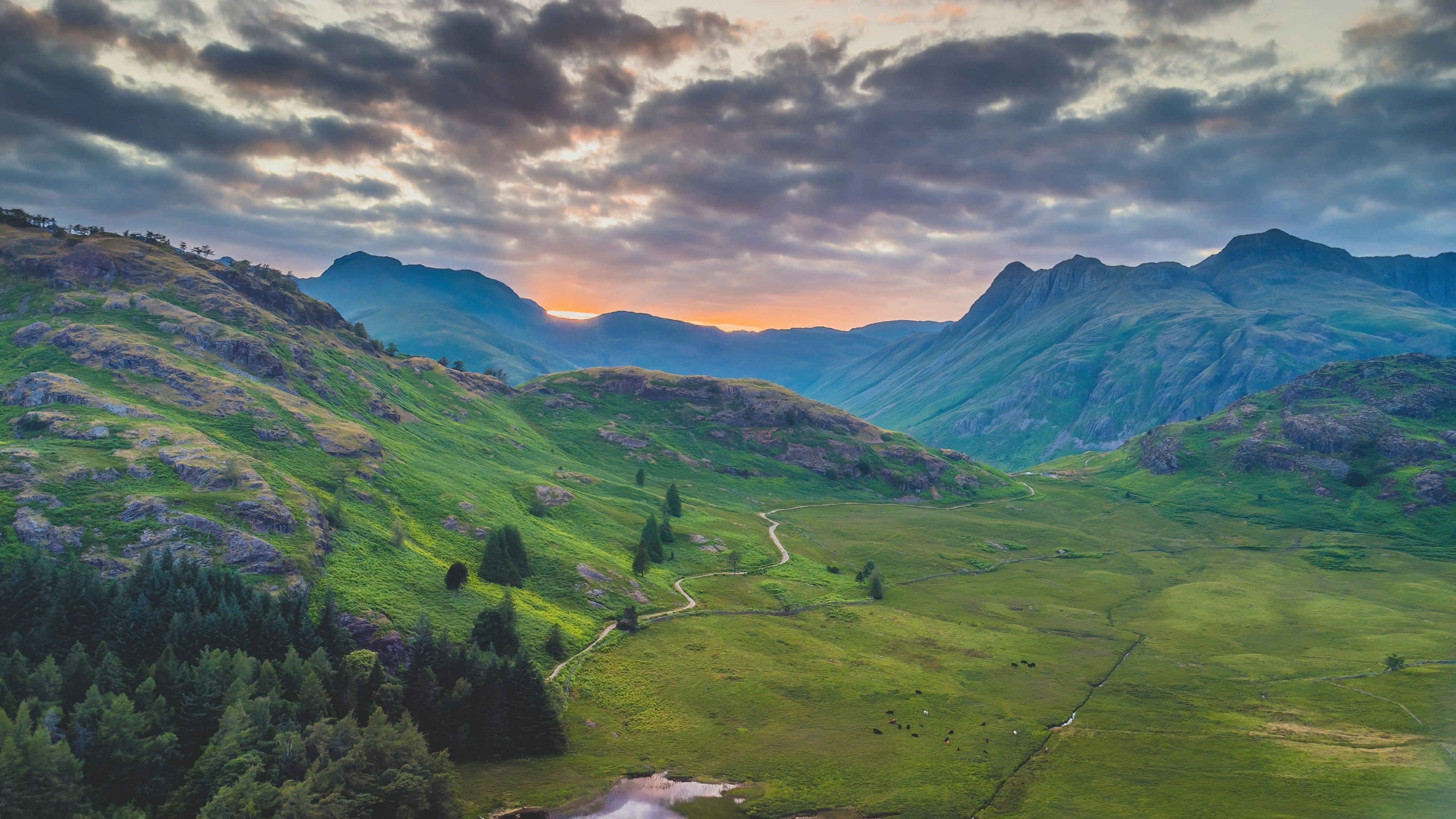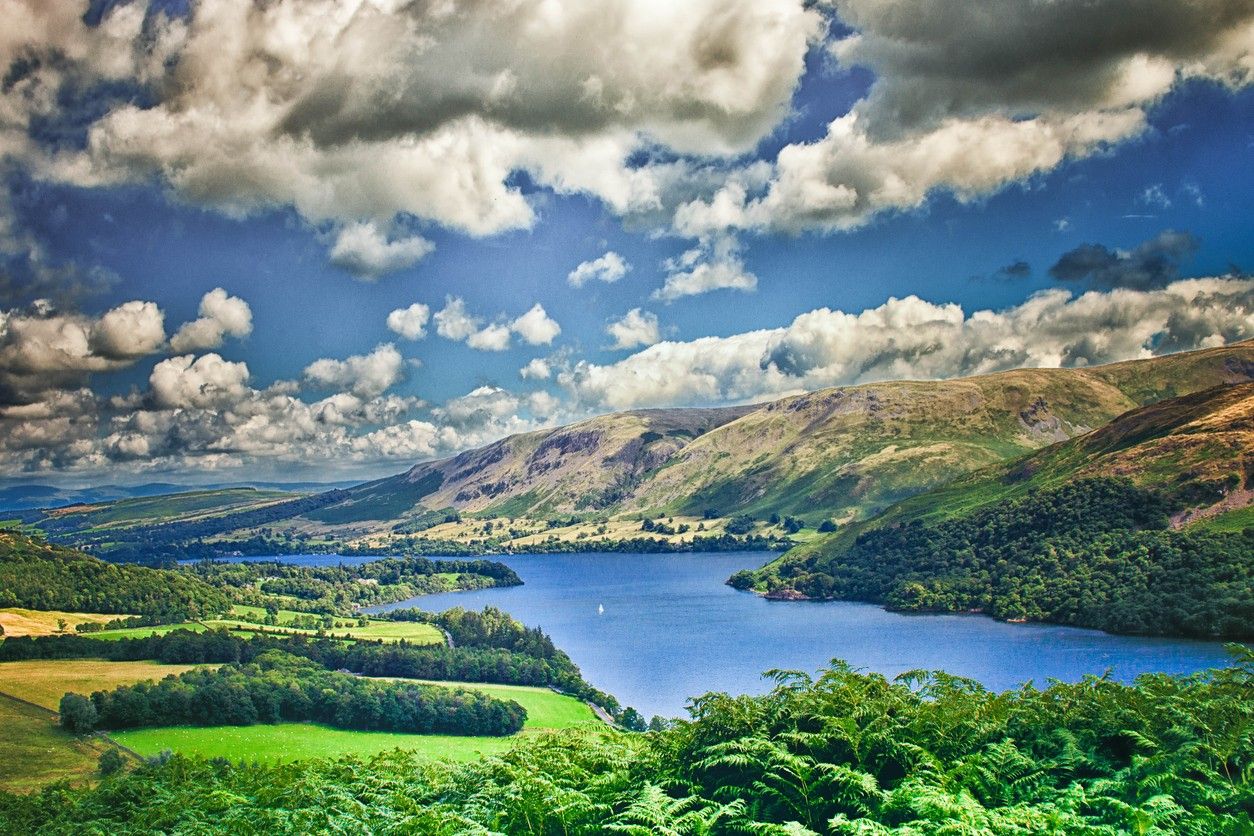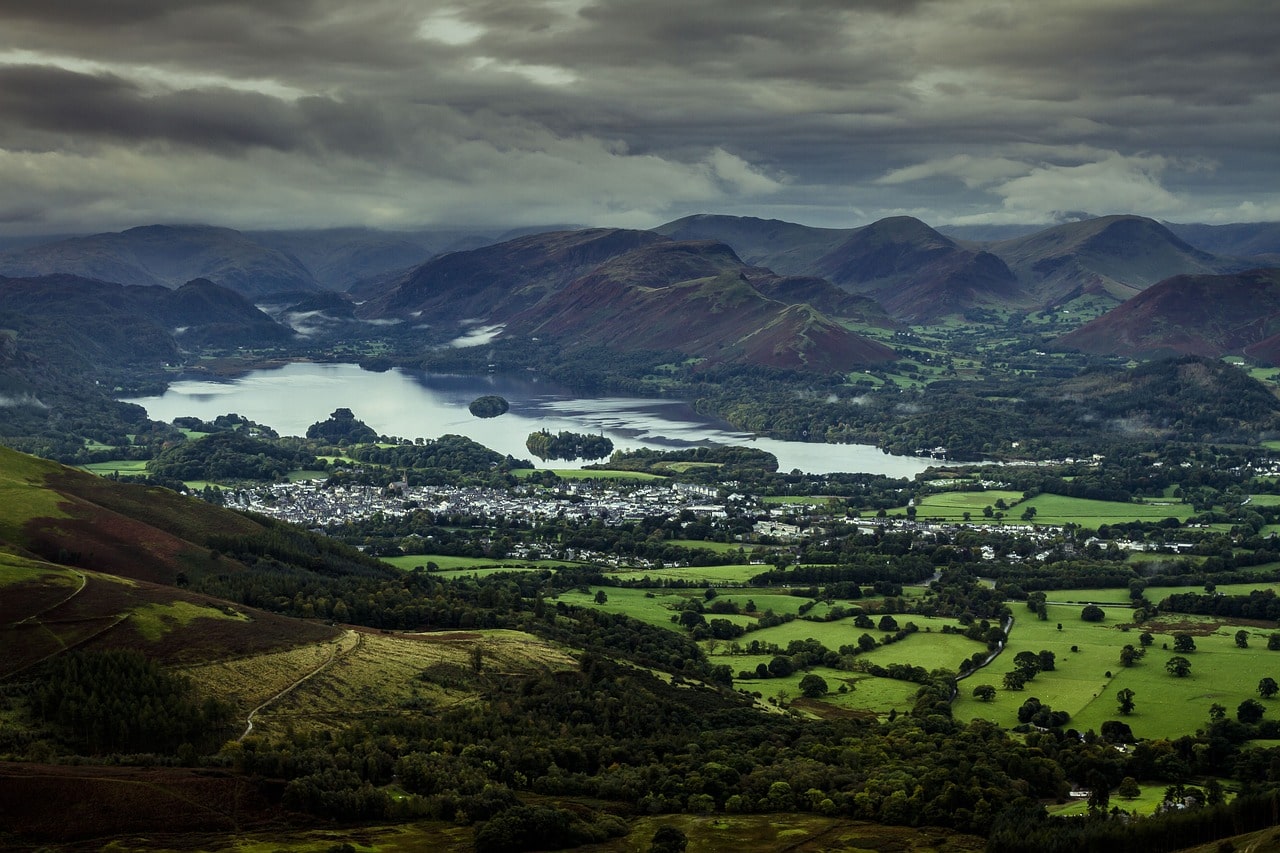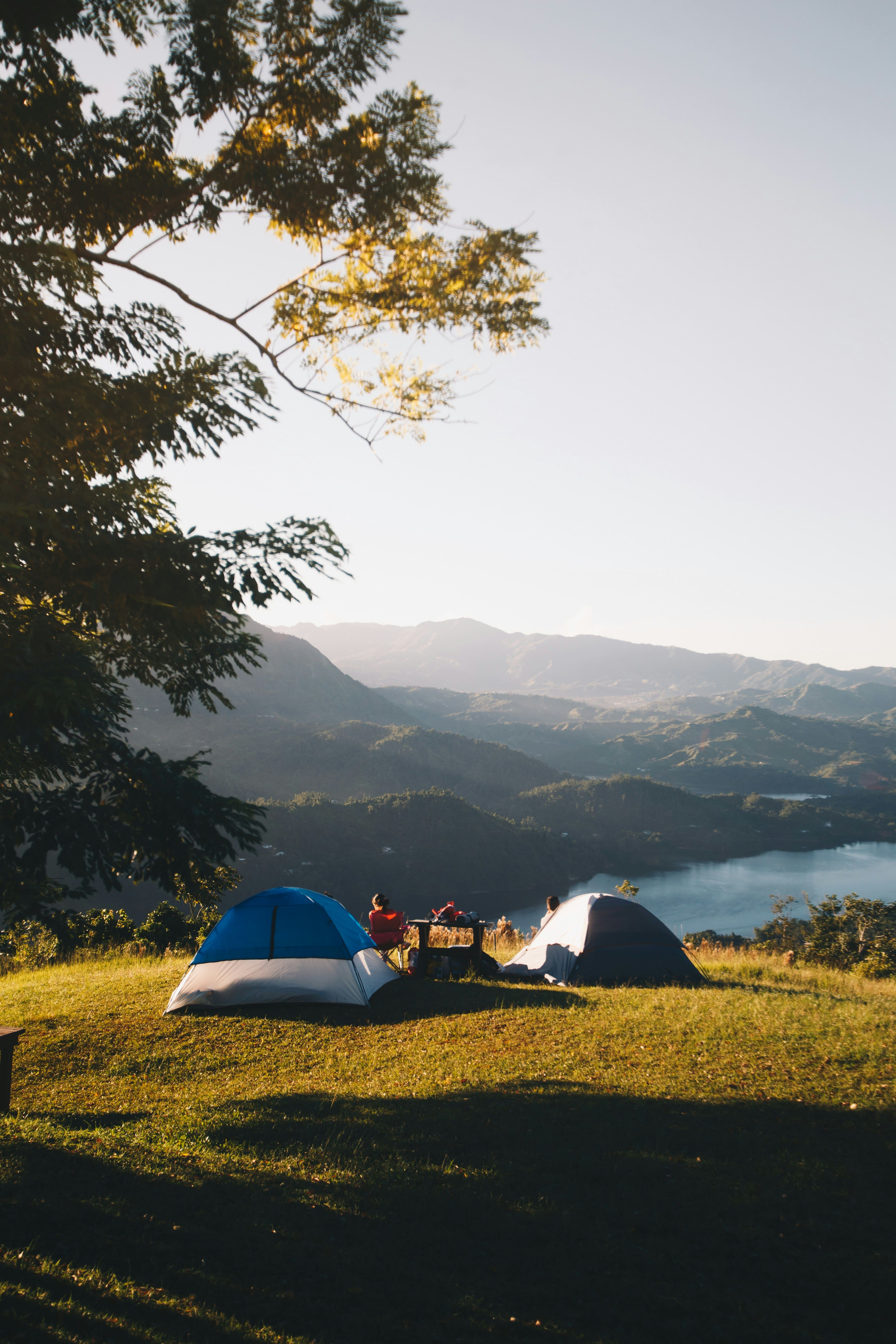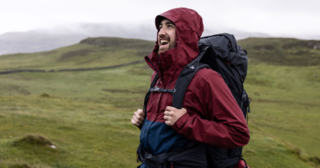Stretching across 885 square miles of Cumberland, Westmorland and Lancashire in Northwest England, Lake District National Park is a place of breathtaking beauty and inspiration. As one of the UK's 15 national parks, this landscape of mountains, valleys, lakes and villages has moved writers, artists and visitors for centuries. Formally designated a national park in 1951, Lake District welcomes over 19 million visitors per year, making it the second most visited national park in the world.
With its glaciated valleys, rugged fells and glistening waters, Lake District National Park offers endless opportunities for outdoor recreation and sightseeing. Many come to hike the park’s 500+ miles of public footpaths, exploring popular routes up Scafell Pike, Helvellyn and other iconic peaks. Others prefer boating, cycling, or photography amid the dramatic scenery. Twelve of the park's lakes offer excellent camping spots, while historic towns like Keswick and Ambleside provide accommodations and dining.
Windermere and the Central Fells
As England’s largest lake, stunning Windermere forms a gateway to Lake District National Park for many visitors. Stretching for over 10 miles from Ambleside towards Newby Bridge, Windermere offers glassy reflections of the surrounding fells that have inspired artists for centuries.
Boating on Windermere
Windermere offers numerous boating excursions to experience England's largest lake. Traditional wooden steamboats criss-cross from Bowness to Ambleside, Newby Bridge, Lakeside and Brockhole. These cruise tours allow sightseeing on the distant fells and wooded shorelines. Rowboats are available for hire in Ambleside, Bowness and Brockhole to explore quieter bays and islands along Windermere's eleven-mile length. Kayaking and canoeing are also popular, ranging from short family-friendly paddles messing around the shoreline to multi-day adventures accumulating over twenty miles of paddling. Stand-up paddleboarding has emerged in recent years as an enjoyable floating tour for packaged SUP safari groups or independent hires.
Central Fells
The high peaks of the Central Fells loom north of Windermere, including England's highest mountain Scafell Pike. At 3,209 feet above sea level, it stands imposing yet attainable for most moderately fit walkers. The classic ascent route climbs from Wasdale Head through boulder scree, before tackling a final airy ridge to the summit cairn. The descent re-traces the ascent for an 11-mile roundtrip. For the peak-bagging collector, neighbouring mountains of Scafell and Ill Crag are readily added as a ridge-traverse over rockier scrambling terrain. Easier but still impressive fell-walking can be found on well-maintained tracks up Bowfell, the Langdale Pikes or Coniston Old Man for panoramic views with a fraction of the climbing.
More Central Fells Walks
While Scafell Pike lures many hikers to test themselves, the Central Fells offer gentler walking routes amid quintessential Lakeland scenery. Loughrigg Fell provides a modest 335-meter climb beside Grasmere, rewarding with sweeping views across Rydal Water and Ambleside. Nearby Loughrigg Terrace contours along Rothay Valley for effortless sightseeing. North of Elterwater village a level path circuits around the Grasmere's quieter sibling, Rydal Water. Elsewhere, tracks from Little Langdale lead gradually up Blea Rigg and High Raise into less-visited scenery. These classical Lakeland hikes deliver big views with achievable miles for most.
The Pikes and Picturesque Lakes
Beyond the central heartland of Windermere and the Central Fells, Lake District National Park stretches north, east and south to envelop further landscapes equally stunning. Sheer rock pinnacles pierce the sky in the Langdale valley, sculpted over eons by patient glaciers. Curving regally at the feet of soaring High Street, Ullswater reveals the lake under changing skies that have inspired artists for centuries. Quieter still lies Bassenthwaite, framing ospreys and fell-walkers rather than steamships and settlements. Each unique, together these three Lakeland lakes encapsulate the very essence of England’s beloved and beautiful Lake District.
The Langdale Pikes
Dramatically sculpted by glaciers, the Langdale Pikes present a classic Lakeland vista. Their sharp arêtes and stone-walled cols provide exhilarating hiking terrain. Trails from the Great Langdale Valley lead past isolated Elterwater village and Angle Tarn to ascend steeply via Stickle Ghyll. A rocky staircase of steps and creaking knees gains the summit ridge between Pavey Ark and Harrison Stickle's distinctive triangular cap. Care is needed to negotiate the airy Knife Edge arete before easier walking continues to Loft Crag, Pike O'Stickle and beyond. Easier valley access from Little Langdale village gives faster access to the Bere Force waterfall. A gentler path leads through the hanging valley of Mickleden to altitude along upland terrain. Connecting passes let hikers create high-level circuits between Langstrath Valley and neighbouring Bowfell. With classic profiles everywhere, these Lakeland fells inspire ilk after ilk of camera-clicking creativity.
Ullswater
Curving majestically beneath the Helvellyn range, glacier-carved Ullswater fully earns the reputation of the Lake District’s most beautiful lake. Nine miles in length yet only a mile wide at points, Ullswater stretches between Pooley Bridge and Patterdale with the perfection that cameras adore. Lakeside trails like the Ullswater Way allow peaceful walking with ever-changing mountain perspectives. Colourful steamers ply the waters between Howtown and Glenridding, bringing Victorian elegance to sightseeing tours. Beyond stand imposing peaks, none more than Helvellyn and its precarious Striding Edge arete. For quieter fell-walking, High Street ranges south via High Raise and Kidsty Pike towards Haweswater. Whatever the trail, Ullswater always astounds whether cloaked in clouds or glittering under bluebird skies.
Bassenthwaite Lake
Lying in the shadow of Skiddaw massif, Bassenthwaite Lake makes up in tranquillity what it lacks in size compared to Windermere. Just four miles long and three-quarters of a mile at its widest point, Bassenthwaite occupies a short glacial trough lined by pastoral scenery. Traditional Lakeland villages like Thornthwaite fringe the lake shores. Quaint pubs and teashops provide sustenance for relaxing circuit walks. Boats and kayaks explore the reed-fringed lake also busy with wildlife. Ospreys take advantage of the lake's population of trout and perch within this conservation area centred on their nesting site near Dodd Wood. For hikers, trails lead over Dodd fell west to Whinlatter Forest or east towards Keswick and mighty Skiddaw.
Weather and Climate in the Lake District
As England’s principality for rainfall, Lake District National Park weather brings atmospheric cloudscapes and rainbows as often as sunny vistas. Weather-wise visitors plan flexibility in itineraries to work around changeable conditions. Summer days average mild temperatures around 20°C, but rain and low clouds still frequent higher falls. Before hiking, check forecasts and pack waterproofs and extra layers. Come prepared for extremes during winter in Lake District National Park. December to March brings below-freezing temperatures, with averages hovering just above 0°C. Snow transforms higher peaks into adventure playgrounds for winter mountaineers. Lower valleys see less snow but abundant frost, fog and blustery winds.
Through all seasons, Lake District weather contributes to the landscape’s moods and magic. Locals smile that you can experience ‘four seasons in a day’ here. Cloud inversions bring summery warmth up high while valleys lie blanketed in cool mist. Clear cold days reveal views for miles across frosted fells. And passing showers spawn shimmering rainbows before blazing through to sunny spells. As Alfred Wainwright wrote, “Let us, for once, be thankful for the rain. Without it, there would be no lakes!"
Charming Villages and Country Towns
Beyond its mountains and lakes, charming villages and country towns give Lake District National Park its human heartbeat. Picturesque Grasmere, gifted inspiration to poet William Wordsworth, offers scenic strolls to spots like Wordsworth’s Dove Cottage and around Sylvan Wordsworth’s Garden. Quirky cafes, stone-clad pubs and art galleries line streets kept deliberately free of chain stores. Nearby slate-grey hamlets like Elterwater and Chapel Stile epitomise traditional Lakeland construction.
To the northwest, Cockermouth provides handsome Georgian architecture from its 18th-century heyday. Cafes and intriguing speciality shops line its cobbled streets, while stately homes like Wordsworth House and Castlegate House offer further historic browsing. Venture to nearby lakes like Buttermere and Crummock Water for quieter mountain scenery.
Coastal villages lent early prosperity to Lake District National Park through mining and quarrying. Today visitors soak up vistas across the Irish Sea from places like Ravenglass, while exploring industrial relics at sites like Muncaster Head limestone quarries and Honister Slate Mine.
Lake District Campsites
With its magnificent mountain scenery and wealth of outdoor activities, it's no wonder so many visitors are eager to experience the magic of the Lake District. For those wanting full immersion into the natural landscapes, camping and glamping sites across the area provide accommodation right amongst the splendour.
Pitching a tent or parking a campervan allows waking up to misty views over Buttermere or sight the Langdale Pikes from your doorstep. Holiday parks dotted around Lake District National Park camping spots like Grasmere, Coniston and Keswick offer campsite creature comforts like hot showers and laundry facilities. Many sites provide campfires or BBQs for apres-adventure socialising as the sun sets.
For those seeking added comfort and a sustainable stay, alternatives like shepherd’s huts, geo-domes, eco-pods and safari tents provide glamping options often with scenic vistas. Excellent family campsites boast playgrounds and organised activities, while adults-only sites promise peace and relaxation. Choose from small remote pitches or spacious campgrounds with 50+ pitches just steps from a lakeshore or pub.
With so many lake district national park camping possibilities, sites book out months ahead for peak periods. Plan trip dates and reserve early, especially for the summer holiday season. Cooler months still offer atmospheric and cheaper camping if hardy enough, just bring extra layers!
Maps and Navigation for Visiting the Park
Whether visiting for a weekend or the whole summer, Lake District National Park map essentials make trip planning easier. The area’s crinkled topography condenses sights tightly across central zones. Handily, national park lake district circles can be divided into logical areas like the central, eastern and far eastern fells. Locals orient themselves by valleys like Langdale, Buttermere and Wasdale rather than fixed settlements.
Once on the ground, excellent road signage aids driving between key spots like Keswick, Ambleside, Kendal or Keswick. For car-free travel, the Summit 1986 network of minibuses links trailheads to accommodations using route 505 in central areas and 508 in south lakes. Ferries and boats operate seasonally across Windermere, Coniston Water and Ullswater.
Whether tackling high mountain hikes or meandering valley trails, packing an Ordnance Survey map helps navigate Lake District National Park. Waterproof versions work well, or customisable maps can be printed online through services like ViewRanger. GPS units/apps aid navigation but don’t rely solely on devices. Phone signal is intermittent in remote areas.
Venturing prepared with snacks, navigation savvy and suitable gear allows making the most of magical days spent immersed in Lake District National Park. Paying heed to weather shifts keeps hikers safe across high ground with changeable climes. Respecting the national park designation by not littering, straying from footpaths or disturbing livestock means these lands stay unspoiled for generations more eager to be inspired.
Related articles

Let us know you agree to cookies
We use marketing, analytical and functional cookies as well as similar technologies to give you the best experience. Third parties, including social media platforms, often place tracking cookies on our site to show you personalised adverts outside of our website.
We store your cookie preferences for two years and you can edit your preferences via ‘manage cookies’ or through the cookie policy at the bottom of every page. For more information, please see our cookie policy.

